
by Valley Gadfly | May 20, 2024 | Glendale City News
You Knead To Know Denver Is No Longer In A Pizza Rut; Mile High Scores 82 Out Of 100, 14% Higher Than The Average City
by Glen Richardson
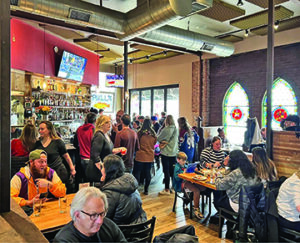
Top In Town: Angelo’s Taverna on E. 6th Ave. is city’s longtime favorite pizza eatery. Google rates it 4.6 stars on 2,983 reviews. Yelp ranks Larimer Square’s Osteria Marco best restaurant.
Step aside, New York and Chicago. Denver is the best pizza city in America. Pizza restaurants in Denver are among the highest rated on Yelp, and pizza prices here are more affordable than most metros. Moreover, demand for pizza is so strong that pizza prices are rising faster than overall inflation — 4.0% compared to 3.5%.
Denver ranked 7th last year. Furthermore, five years ago people coming to Denver from Pizza meccas (New York, Chicago, or Connecticut) couldn’t find anything tolerable in Denver. “Residents didn’t know. . . or had ever tasted good pizza,” locals recall.
Today, pizza restaurants in the Mile High City average 4.05 stars out of 5 on Yelp — one of the highest averages in the country. Buying a cheese pizza each week for a year in Denver requires 1.03% of the median annual income — 30% less that the income required in the average city reviewed (1.47%). Denver beat out popular pizza cities — including New York, Chicago, and Detroit — in part because of lower prices, but just as important, due to far better pizzeria reviews!
Top At 4.05 Stars

Pizza Popularity: Denver is the best pizza city in America. Pizzerias — including Redeemer Pizza on Larimer, shown, are among the highest rated on Yelp.
Clever Real Estate ranks the country’s 50 largest metros in the nation. They use data-driven metrics, based on the quality of pizza restaurants per capita: Google search trends, Yelp reviews, plus two surveys of 1,000 Americans, and multiple affordability metrics. Here’s how Denver’s pizza scene surpassed the competition:
Denver pizza restaurants averaged 4.05 out of 5 stars on Yelp — better than the average city’s 3.89 stars and New York’s 3.93 stars. Plus, Denver pizza is more affordable. Based on local prices and incomes, buying one large cheese pizza each week for a year would cost the typical resident 1.03% of their annual income. Nationally, the figure is 1.47%, and in New York, it’s 1.77%.
Giles Flanagin admits change in the local pizza scene has been dramatic in the past few years. Cofounder in 2015 of Denver-based Blue Pan Pizza, he says countless top pizzerias have opened since. Eateries he defines as “small businesses with a passion for pizza, dough, fermentation and quality.” Denver residents, he adds, are supporting high-quality products with high-quality ingredients. Thus, growth has been very rapid, featuring a lot of different pizza styles all done very, very well.
Denver Diversity
Denver’s pizza diversity — as discussed by Flanagin — can easily be found on a local pizza map. Mile High pizzerias offer New York-style thin-crust pizza, Chicago-style deep-dish pizzas, Sicilian pies; and even Connecticut’s signature New Haven-style pie.
But, but that’s just the beginning: Once known as “cow town,” pizzerias in the Queen City of the Plains now feature eclectic offerings like breakfast pizza, plus exotic toppings like Guinness cheese, Sichuan sauerkraut, crème fraiche, limoncello-marinated chicken, and pistachio pesto.
The creativity never stops: Consider a Middle Eastern lamb pizza, a sweet potato, goat’s cheese & pine nut pizza, or a Tandoori chicken pizza. Or, maybe a veggie supreme or dessert pizza.
Top Restaurants

Delightful Duo: Being the epicenter of the west’s beer culture enhances Denver’s pizza popularity. Pizza and beer make a classic pair, bringing out the best of each other’s complementary flavors.
Yelp ranks Osteria Marco on Larimer Square as Denver’s top pizza restaurant. It is known for hand-tossed pizzas such as Artisan, Fig & Gorgonzola, and Carne. The cozy basement eatery also serves Italian plates. Information: 303-534-9855. They also list Marc’s Coal Fire — an Italian eatery-bar by Coors Field — that serves Neapolitan and New York-style pizza with choice of toppings. Information: 303-396-7000.
Many residents and the Chronicle rate Angelo’s Taverna on E. 6th Ave. as the Mile High’s top pizza restaurant. Google ranks it 4.7 stars based on 2,532 reviews; Yelp gives it 4.5 for 1,501 reviews. Information: 303-744-3366. Esters Neighborhood Pub on S. Holly in Virginia Village — albeit not strictly a pizza restaurant — also has seriously delicious pizza in a welcoming atmosphere. Information: 303-955-4904.
Among local pizza spots, some of the most popular newcomers are Dough Counter on S. Colorado Blvd. that specializes in New York and Sicilian-style pies. Information: 303-997-8977; and funky pizza joint Blue Pan — with a location on E. 12th Ave. — that brought the crispy pan pizza style to the Mile High City. Information: 720-519-0944. Furthermore, new dough spots keep popping up: Rolling Pin Pizza is among the latest, opened in early April at 1514 York St., followed by Eat’Ya Pizza on the 16th Steet Mall in early May.
Pizza Passion
Denver scored 14% higher than the average city based on pizza passion. The city’s score was 82 out of 100, compared to the average city’s score of 72. The ranking includes placing No.1 out of 50 cities for
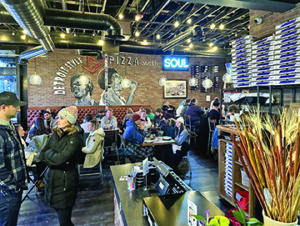
Passion For Pizza: Blue Pan Pizza that opened here in 2015 is in the forefront of Denver’s pizza revolution. Due to technique and quality, their Detroit-style pizza remains a crowd favorite.
online search interest in pan pizza. The metric measures how often locals are searching Google for pizza, and pizza-related terminology.
The abundance of options ranges from Neapolitan and Detroit-style, to square-cut tavern pies of the Midwest, to the New Haven-inspired wood-fired pies.
With 72 breweries, Denver is the epicenter of beer culture in the West, enhancing the popularity of local pizza. Pizza and beer make a classic pair, because they bring out the best of each other’s complementary flavors. The fresh crisp flavor of beer cuts through the creamy cheese, enhancing the herbs in the pizza sauce, and balancing the acidity.
Mile High Mozzarella

Shape Of Taste: Photos show square Detroit pizza, top, and a Chicago-style round deep-dish pizza. City also has rectangular Sicilian pies, New York circular shape; plus, oblong New Haven pies.
The Mile High City’s pizza popularity isn’t due to Denver’s Italian community. Less than 5% of the city’s 2024 population of 708,948 are of Italian descent. Most of today’s local pizza aficionados, moreover, are unaware that a Denver-based company is the world’s top mozzarella pizza producer.
 Leprino Foods — headquartered in a three-story building on West 38th Ave. at Quivas St. — sells more than a billion pounds of cheese a year. It is the same site where, in 1950, Italian immigrant Mike Leprino Sr. started making small batches of cheese by hand from the back of his neighborhood grocery store. Mike’s 73-year-old son, chairman, and chief executive Jim Leprino ($2.3 billion 2024 net worth), runs the company.
Leprino Foods — headquartered in a three-story building on West 38th Ave. at Quivas St. — sells more than a billion pounds of cheese a year. It is the same site where, in 1950, Italian immigrant Mike Leprino Sr. started making small batches of cheese by hand from the back of his neighborhood grocery store. Mike’s 73-year-old son, chairman, and chief executive Jim Leprino ($2.3 billion 2024 net worth), runs the company.
In 1958, after chain grocery stores forced the local Leprino food market to close, the Leprino cheese empire was started with $615. Today, Leprino uses up to 7% of the nation’s total milk supply. The company controls as much as 85% of the market for pizza cheese, while selling to Pizza Hut, Domino’s, Papa John’s, and Little Caesars. Able to invest in technology that dairy farmers can’t afford, the company has more than 50 patents, plus an estimated 7% net margin.
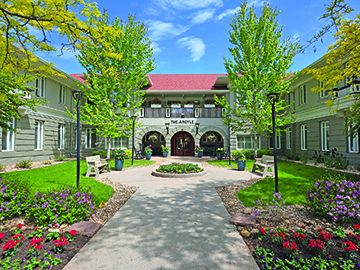
by Jessica Hughes | May 20, 2024 | Travel
by Jessica Hughes
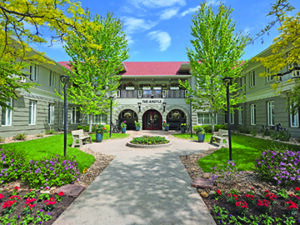 With the rising cost of living and the grip of inflation on monthly budgets, coupled with the potential loss of Social Security, affording retirement is becoming an increasingly distant prospect for aging Baby Boomers and Millennials alike. Compounding this challenge is the continued escalation in the cost of assisted living facilities, and the dwindling number of such facilities accepting Medicaid. This combination makes finding a quality, yet affordable, assisted living facility for seniors an ever-growing challenge, underscoring the immense value and significance of places like The Argyle in Denver.
With the rising cost of living and the grip of inflation on monthly budgets, coupled with the potential loss of Social Security, affording retirement is becoming an increasingly distant prospect for aging Baby Boomers and Millennials alike. Compounding this challenge is the continued escalation in the cost of assisted living facilities, and the dwindling number of such facilities accepting Medicaid. This combination makes finding a quality, yet affordable, assisted living facility for seniors an ever-growing challenge, underscoring the immense value and significance of places like The Argyle in Denver.
The Argyle is a well-known non-profit senior living facility in Denver that works to provide affordable, high-quality living accommodations and services to low- and moderate-income seniors in Denver. This long-time legend in senior assisted living just celebrated its 150th anniversary last month.
Coinciding with this historic occasion, the facility unveiled its latest renovations, a promising indicator that it will continue serving the community for years to come. With an unprecedented demand for assisted living care on the horizon — statistics suggest that 7 out of 10 individuals will require such services in their lifetime — and projections estimating an additional one million beds will be needed by 2040 to accommodate the growing elderly population, establishments like The Argyle take on heightened significance in meeting the escalating need for quality care.
Over the years, the Argyle has maintained its non-profit status, which Executive Director of the Argyle, Tom Carlson, explains is why they can offer affordable, high-quality living accommodations and services to its seniors.

Renovated dining room at The Argyle.
“We are a non-profit. We don’t have a large corporation or investment company that we need to make large payments to every month like most other Senior living communities do. We have been in this location since 1900 and to my knowledge, we don’t have a mortgage,” says Carlson. “We have a board of nine members who are non-paid volunteers, some of which are in the accounting field. They oversee us to make sure we are being good stewards of our money.”
As a non-profit senior living facility, the Argyle offers high-quality care for lower to moderate-income seniors at an affordable monthly rate. Current monthly costs for assisted living residents of The Argyle start at $2,800, while the median cost of a private, single-bedroom unit in an assisted living facility in the U.S. is $4,803 per month.
“A non-profit is not sending money to an investment company or a large corporation. Non-profits are just that, non-profits; they have to use their money by putting it back into the community, their staff, or their residents,” says Carlson. “As a result, non-profits usually pay their staff higher, ensuring they have better more qualified staff resulting in, my opinion, better care.”

Renovated lobby at The Argyle.
The facility’s mission to offer quality care for moderate-income seniors is a “tradition” that extends back to its original roots in 1874 when two women, Mrs. Ann Figg and Mrs. Vincent, met with their friends at Trinity Methodist Church in Denver to address the growing homeless population, affecting mostly women. They came together to create an inclusive retirement community that felt like home, regardless of financial circumstances. So, in 1875, The Old Ladies Home opened its doors to elderly women in Denver.
“In the 1870s, this was a very revolutionary idea. Things were very different then and women were not given the same opportunities as men, especially older women. And the thought of caring for seniors who are not your loved ones during that time was unheard of,” says Carlson. “They saw a need and brought it to the community to help this underserved population.”
By 1900, the facility relocated to its current location in the Berkeley/Highlands neighborhood, inspiring its name change to the Argyle. Beyond its name change, the Argyle evolved into assisted living for all seniors in need, not just women.
“In 1984 we started letting men live here,” says Carlson. “We have also reached out to our other underserved populations including the black community, the Hispanic community, and the LGBTQ community to let them all know they are welcome here and will be treated with dignity and respect while keeping our core mission of serving seniors.”
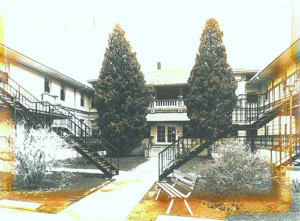
The Argyle in 1979
In 1988, the original building was demolished and in 1990, a new building was constructed to enhance the quality of the facility while providing more rooms for residents. Carlson explains the much-needed renovations kept the old-world charm but gave the facility a fresh look. The historic front facade was saved, returning the building to its original design, and more than 200 pieces of furniture and artwork were restored.
Beyond its restored aesthetics, the Argyle offers a wellness center with trained physical therapists on staff who create a personal one-on-one training session for each resident who wants one. “This is free to all, no insurance is billed. This is just one example of the many benefits of The Argyle,” says Carlson. “We have many activities and outings, including Rockies games and shows at the Buell Theater.”
But for aging Baby Boomers and Millennials, the cost for high-quality assisted living will have to come down to affordable retirement in facilities similar to the Argyle. “I see the Baby Boomers and Millennials wanting to move to senior communities when they are at the right age. Maintenance-free lifestyle, someone to make your meals, do your laundry and have a full activities calendar of things to do with your peers,” says Carlson. “The issue is going to be the cost. It is said that the boomers have far less in savings at this stage in their life than the prior generation and with millennials, the verdict is still out if they will be able to afford senior living.”
Photos provided by The Argyle

by Editorial Board | May 20, 2024 | Editorials
Editorial —
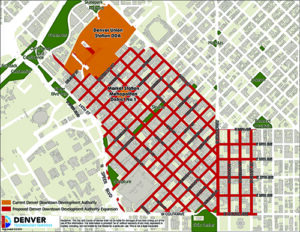 Denver Mayor Mike Johnston held an outdoor press conference by Union Station. He correctly noted that Denver, to be a successful vibrant city, must have a successful vibrant downtown, and for Colorado to succeed it needs a successful City and County of Denver. He also noted that Denver needs to break out of the area’s post-COVID “doom loop” that other cities like San Francisco are experiencing.
Denver Mayor Mike Johnston held an outdoor press conference by Union Station. He correctly noted that Denver, to be a successful vibrant city, must have a successful vibrant downtown, and for Colorado to succeed it needs a successful City and County of Denver. He also noted that Denver needs to break out of the area’s post-COVID “doom loop” that other cities like San Francisco are experiencing.
The trouble he has is that his solution of using an obscure special taxing authority — the Denver Downtown Development Authority (DDA) — to raise a half billion dollars to invest in downtown won’t work because of what the mayor will use the money for. The mayor is lying to you when he says he doesn’t know what the money will be used for. He indicates the “campaign will start with a conversation with downtown residents.” He has even set up a website, Denvergov.org/DDA, “where every Denverite can chime in with their hopes and dreams for what they want from the downtown.”
What a bunch of “malarkey” as President Biden would say. Luckily citizens have become a great deal wiser over the last few years that they cannot just count on what the government and politicians say is true. Rest assured every penny of that half billion “free money “ has already been spoken for.
The mayor will announce that what Denverites really want is for existing high rise office buildings to be retrofitted as personal residences. Of course, the mayor cannot be that brutally frank so it will be closer to what the mayor sheepishly said he maybe, sort of likes: “more childcare centers, commercial-to-residential conversions, and affordable housing.”
Yes of course, we need more childcare centers in the one place in Denver where there are almost no children. Downtown is inhabited by young two income couples with no children and older citizens whose children have left home so they decided to move to downtown Denver. The mayor also would like to have more “affordable housing” in the most expensive place to live in Denver. Really? No problem. He just declared 10% of the converted units must be “affordable” however he may define that term.
That leaves you with “commercial-to-residential conversions.” Anybody who has looked at such conversions states that they would be incredibly expensive and better to tear down the existing office towers and build new apartment houses and condominiums.
But you are failing to see who this is intended to benefit. Denver has a 30% vacancy rate and many properties have gone back to the regional banks that overly invested in office buildings and some properties owned by Real Estate Investment Trusts (REITS) that are in the same position. The banks have written off the loans and the REITS their investments. But they are both unwilling to expend any more money on the properties. That is where DDAs come in. They give free money to the property owners for the overly expensive conversions and now the properties will actually be worth something.
Even better, the Biden Administration knows it can’t let the regional banks go belly up so it has massive amounts of money in the form of federal grants for “commercial-to-residential” grants.
But if nothing is ever paid back who loses? Well, of course you do. The money that goes in the Tax Increment Financing is money that would otherwise go to the general fund of the city as well as to the Denver Public Schools. The schools just increase your mill levies as back fill and the city either cuts services sometime in the future or raises taxes sometime in the future but that is for your kids to worry about if they still want to live in Denver.
It is a great rob Peter (Denverites in the future) to pay today Paul (the banks and the REITS). Luckily no other media outlet in the Denver market other than the Chronicle will tell you this and the scheme will merrily be approved by the Denver City Council and the people voting in the future DDA. They have nothing to lose, only you, and you don’t get to vote on the matter. What a wonderful world.
— Editorial Board

by Mark Smiley | Apr 19, 2024 | General Featured
Tickets For The Wednesday Evening Concert Series In June And July Are On Sale Now
by Mark Smiley

3eatles: The 3eatles perform the music of The Beatles the way it was intended to be heard — live, raucous, high-energy rock n’ roll. They perform at Four Mile Historic Park on June 12 as part of the Swallow Hill Summer Concert Series.
Swallow Hill Music returns to Four Mile Historic Park this summer with a concert series featuring tribute acts celebrating some of music’s most beloved artists.
Whether it is the classic rock sounds of The Beatles and the Grateful Dead, pop classics from Judy Garland, or the unmistakable hip-hop of the Beastie Boys, this summer’s lineup of tribute artists has a little something for everyone.
Music lovers are encouraged to pack a picnic dinner and spread out on the lawn to take in a night of music and memory-making in a family-friendly environment. Outside food and non-alcoholic drinks and coolers will be allowed, but outside alcohol is not permitted. An onsite bar will be available.
For more than two decades, Swallow Hill has filled the summer evenings with music at Four Mile Historic Park. Get your friends together and join us!
The Wednesday night concerts begin at 6:30 p.m., with Four Mile Historic Park opening at 5:30 p.m. Four Mile Historic Park is located at 715 S Forest Street in Denver. Tickets are $20 general admission ($15 for Swallow Hill Members, $10 for kids 4-12, children 3 and under are free). Visit www.swallowhillmusic.org/four-mile for more information or to purchase tickets.
Get the full lineup and complete details below.
June 5 — Traveling Wilburys Revue – Tribute to Tom Petty, Bob Dylan, Roy Orbison, and more
June 12 — Starwood – Tribute to John Denver
June 19 — 3eatles – Tribute to The Beatles
June 26 — GET HAPPY! Celebrating 100 Years of Judy Garland
July 3 — Sabotage – Tribute to the Beastie Boys
July 10 — Sugar Britches – Tribute to John Prine
July 17 — Shakedown Street – Tribute to the Grateful Dead
Founded in 1979, Swallow Hill Music is a Denver-based 501(c)(3) nonprofit organization with a mission to build community through music performance, education, and outreach. SHM is a music school and performance venue that also produces community events throughout the Denver metro region. It is an SCFD Tier II organization with a $5 million annual budget. SHM is a nationally revered hub for concerts, classes, and community events. It is also a recipient of both the Mayor’s and the Governor’s Award for Excellence in the Arts, and an inductee of the Colorado Music Hall of Fame and Folk Alliance International’s Business Lifetime Achievement awards. For more information visit www.swallowhillmusic.org
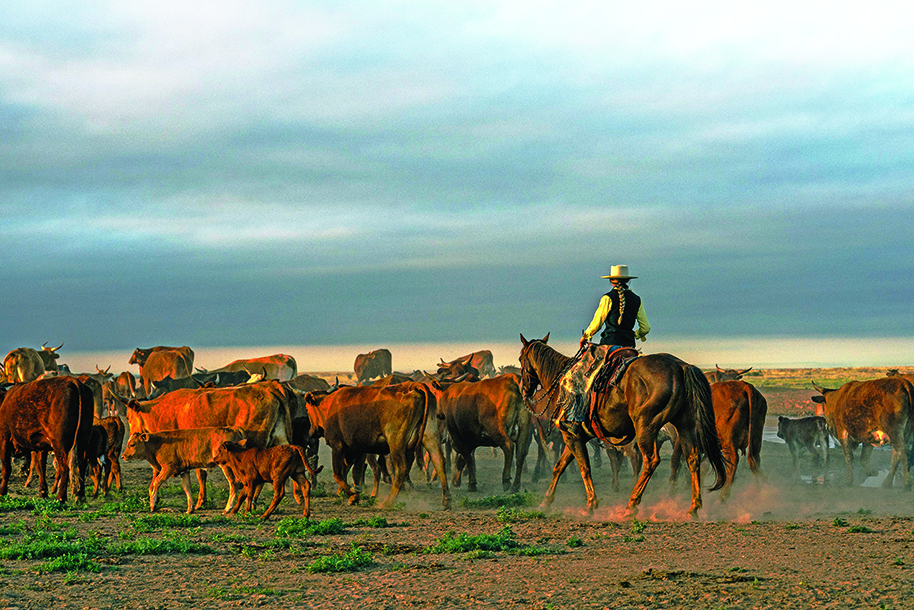
by Jessica Hughes | Apr 19, 2024 | Glendale City News
by Jessica Hughes
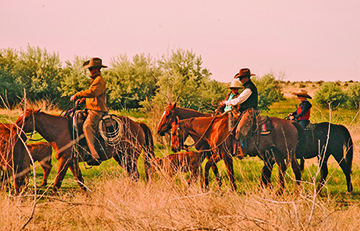
Ranching at Chico Basin Ranch. Photo credit: Ranchlands and Davey James Clark

Chico Basin Ranch. Photo credit: Ranchlands and Matt DeLorme
A recent decision by the Colorado Land Board to not renew a 25-year lease at Chico Basin Ranch has left a favorite Colorado family without a home for them or their cattle.
Located just southeast of Colorado Springs, the Chico Basin Ranch spans 86,000 acres of short-grass prairie and has been held in a trust for the good of Colorado’s K-12 schools. The land is leased and managed by Ranchlands, a family-ranching business run by Duke Phillips III and his children. They operate large-scale cattle and bison ranches in the American West and partner with conservation-minded owners to implement conservation programs that work alongside their ranching operations, all while preserving the ranching legacy.
The lease between the Colorado Land Board and the Phillips family business is due to expire at the end of this year. According to the Colorado Department of Natural Resources, “to prepare for the expiration of the lease, the State Land Board evaluated different leasing scenarios that would achieve the goals of the School Trust to earn revenue and maintain exceptional stewardship.”
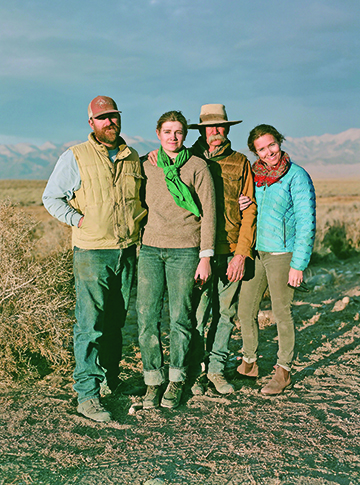
The Phillips Family: Duke Phillips IV, Madi Phillips, Duke Phillips III, and Tess Leach. Photo credit: Parker Fitzgerald and Ranchlands
To evaluate available options, the agency hosted 11 public meetings over 18 months and issued a competitive request for proposals. In November 2023, the Colorado Land Board decided to lease the land to another ranching operation that outbid Ranchlands by a hefty amount, despite Phillips and his family pleading with the board to consider more than just money for the new 10-year lease.
In this case, money spoke the loudest and the Phillips family was out-bid by a lot. Ranchlands offered 25% over asking and the new lessee offered 75% over.
“We offered a fair and consistent revenue for the renewed lease,” says Tess Leach, Duke’s daughter, and Head of Business Development at Ranchlands. “We thought that they would value our operations and the impact we had on the community over money.”
In this situation, it appears that money won, begging the question, what is the purpose of the Colorado State Land Board? As the second-largest landowner in Colorado, with 2.8 million surface acres and 4.0 million mineral estate acres, the board states its mission is “to produce reasonable and consistent income over time, and to provide sound stewardship of the state trust assets.”
Thus, the board has a mission to not accept the highest bid for a lease, which they just did, or accept profitable, yet damaging uses for the land it owns. State lands are leased for many different reasons, some of which Ranchlands won the bid for 24 years ago, including recreation, cattle grazing, and hospitality.
During their long-standing lease, Ranchlands was proud to provide a variety of educational programs, recreational activities, ranch stays, art shows, concerts, creative writing workshops, roping, and photography classes at Chico Basin Ranch for the community to enjoy. And to help the next generations of ranchers take hold, the Phillips also offered an apprenticeship program that helped train young ranchers with real-world experience, plus learn about ranching and conservation.
One of Ranchland’s most successful programs is the bird-banding station that they instituted — the oldest in Colorado. Because the Chico Basin Ranch is one of the largest uninterrupted stretches of prairie left in the United States, the ranch is known as one of the prime locations in Colorado for birding. In partnership with the Audubon Society and Bird Conservancy of the Rockies, the ranch maintains a bird banding station where visiting biologists band hundreds of migratory birds and is open to the visiting public to help assist in this process.
However, these programs face an uncertain future as the lease nears its expiration. According to Phillips, the new lease agreement lacks any provisions for public recreational access, implying that the land will be off-limits to the community starting in 2025. This reality threatens to dismantle the programs and initiatives that Phillips and his family have painstakingly cultivated over the years.
Phillips describes this as a huge loss for the Front Range of Colorado. “We have always had an open gate policy for people to come in and look at the ranch and enjoy it with hiking, tours, and other activities,” says Phillips. “Our biggest legacy at the Chico, is the community we have built. This is what we are most sad to be leaving behind.”
“I don’t think the land board values the community component as much as they do about money,” says Duke. “If we continue to value money over community, ranching will become a thing of the past if we don’t recognize the importance of conservation and community.”
Despite this devastating loss, the Phillips family is determined to continue its efforts to bridge the divide between rural and city communities. “People are becoming more and more isolated from nature,” says Phillips. “It has become a focus for us to try and bridge the gap between urban and rural communities.” Because of this, Ranchlands has initiated The Collective, a new organization focusing on developing a model, that sees ranching as an alternative to large-scale conservation in the U.S. The first-of-its-kind, a Collective membership will grant those who join a deeper access to Ranchlands and their mission of perpetuating ranching into the future with exclusive events, conversations, and experiences on working landscapes.
“This will only happen if we do it together,” says Phillips. “We can’t do it alone as ranchers and we will all have to come together to make this happen.”

Art programs at Chico Basin Ranch. Photo credit: Ranchlands and Avery Sass
Phillips and his family are on a mission to create a grassroots movement where the short-term gain of money isn’t the objective, and the long-term vision for the land is. “The whole idea of land being treated as a commodity that is bought and sold, is a foreign concept to someone like me as someone who lives on it, tries to take care of it, and use it,” says Phillips. “We want to start a revolution with The Collective that protects the land through ranching and not money and transactions.”
The Phillips family will soon leave Colorado and make a new home at Paint Rock Canyon on the west side of the Bighorn Mountains, in Wyoming. But the biggest challenge right now is finding another ranch to which they can move their cattle. While the family’s challenges are far from over, they are hopeful for the next chapter and the continued ability to uphold and share the legacy of ranching with the next generation.
“Life gives you a lot of bends and turns in it. We’re going to take the lumps and move forward and see where we land,” says Phillips. “But we are looking at the other side of it all and are thankful to have lived there. We are very appreciative of our time at Chico Basin Ranch.”
For more information, visit them at Ranchlands.com.

by Editorial Board | Apr 19, 2024 | Editorials
Editorial —

Senator Lisa Cutter

Representative Lorena Garcia
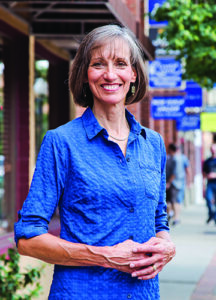
Representative Tammy Story
There is no more contentious issue in the country than the schooling of children. Public school union teachers are one of the most important cogs in the Democrat coalition with funds for Democrat candidates from dues and volunteers for their campaigns. The teacher unions have become more and more radicalized over the years.
The “Red for Ed” movement among unionized teachers has spread across America starting in Chicago, and spreading all the way to states such as West Virginia, Arizona, and Oklahoma. The color “red” in this instance does not refer to Republicans but the earlier association with socialists/communists.
Conversely, educated during the COVID-19 pandemic, parents were shocked by what was being taught to their children and began pushing back. The fight was ratcheted up over the trans issues and in particular the position by some public schools that they would not notify parents while their children were given puberty blockers or beginning to transition from one sex to another.
Wealthy parents who could afford to send to private schools did so to escape the unionized teachers and other parents began homeschooling their children. Parents also began embracing the movement started in the 1990s of “charter” schools which are publicly funded but run by parents or even companies.
Unionized teachers uniformly dislike charter schools and do what they can to destroy them. Not a single charter school in Colorado has unionized teachers. That is where the Polis caper begins.
Democrat Representatives Lorena Garcia, Tammy Story, and Senator Lisa Cutter introduced HB24-1363 they said to reform and update the provisions for charter schools. They claimed to want to make charter schools more transparent and provide them with the same high standards as neighborhood public schools.
It drew high levels of support from a “who’s who” of progressive groups including the League of Women Voters, Colorado PTA, Colorado Working Families Party, Colorado Teachers Association, American Federation of Teachers Colorado, Servicios Sigue, Latino Education Coalition, Colorado Democratic Education Initiative, Advocates for Public Education, and Advocacy Denver.
No one supporting charter schools was fooled. American Federation for Children said that “30 years of charter school work could be undone.” Local charter groups said charter schools in Colorado “will suffer death by a thousand cuts.”
It would seem with strong support from Democrat groups and the state legislature having Democrat super majorities the legislation could not fail to pass.

Governor Jared Polis
But that was the big con. It was never intended to pass. No bill is introduced by Democrats that is not pre-approved by Governor Polis. He, in turn, has great aspirations to run for U.S. President with cross party appeal. He has almost comically labeled himself to be a small “l” libertarian. In his five years as governor, he has done nothing that did not mark him as a far-left politician.
Now was the time for the charter school caper. A true Sister Souljah moment.
When Polis first ran for governor in 2018, he claimed to be a strong charter supporter, having helped start one in Boulder, and appointed pro charter and even Republicans to his education team in 2018.
So why didn’t Polis tell the three legislators that they could not introduce the legislation. That would not work because he would not have gotten credit for killing anti charter school legislation backed by many progressive groups. Alternatively, he could have waited to veto the legislation but by then numerous people would have become attached to the legislation and a veto would ruffle feathers.
So after being introduced and sent to a committee, Polis announced his opposition to the cheering adulation of pro charter advocates. The bill was then killed in committee by a 7 to 3 vote. Polis was a hero to people that normally dislike him and his status as a possible presidential candidate with broad support enhanced.
It is said that most people can be fooled most of the time and Governor Polis has proved that he is very adept at doing so.
— Editorial Board






 Leprino Foods — headquartered in a three-story building on West 38th Ave. at Quivas St. — sells more than a billion pounds of cheese a year. It is the same site where, in 1950, Italian immigrant Mike Leprino Sr. started making small batches of cheese by hand from the back of his neighborhood grocery store. Mike’s 73-year-old son, chairman, and chief executive Jim Leprino ($2.3 billion 2024 net worth), runs the company.
Leprino Foods — headquartered in a three-story building on West 38th Ave. at Quivas St. — sells more than a billion pounds of cheese a year. It is the same site where, in 1950, Italian immigrant Mike Leprino Sr. started making small batches of cheese by hand from the back of his neighborhood grocery store. Mike’s 73-year-old son, chairman, and chief executive Jim Leprino ($2.3 billion 2024 net worth), runs the company.















